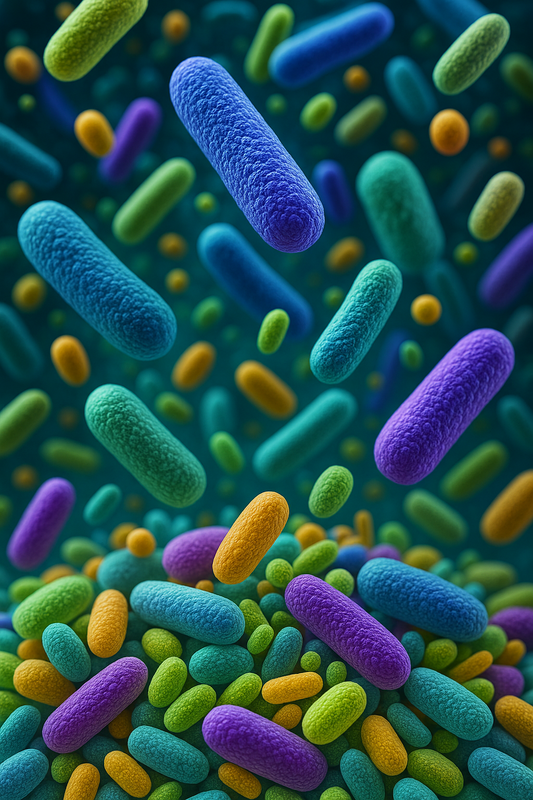Why apples are so healthy and what you should pay attention to when eating them.
Apples are an everyday yet amazing fruit used in numerous kitchens and households around the world. Their popularity is not only due to their refreshing taste, but also to the impressive health benefits they offer. Did you know that eating apples regularly can reduce the risk of heart disease by up to 20%? This effect is due to the high concentration of fiber and antioxidants that regulate cholesterol levels and reduce inflammation. From crunchy snacks to refreshing juices or as an ingredient in desserts, apples can be found in countless recipes and enrich any menu.
USA Apple World Champion
The apple has a long and fascinating history. It originated in Central Asia, where the ancestors of the modern apple, the wild apple, still grow in the forests of Kazakhstan. The apple reached Europe via trade routes and has been further developed through targeted breeding over the centuries. Interestingly, there are over 7,500 varieties of apple worldwide, each with its own unique taste and texture.
Apples are now the most popular fruit in Germany - in 2021, German households consumed an average of 25 kg of apples per capita. Germany is also a major apple producer and exports thousands of tons of this versatile fruit every year. But that's nothing compared to the US, which consumes more than twice as many apples as Germany. Americans consume a lot of apples because of their high availability and affordability, the cultural significance of the apple, its health benefits and its role as a popular snack, in addition to the fact that the US is also the largest apple producer in the world.
Largest Apple Consumers 2023
The following table shows the top five apple consumers in 2023, based on per capita consumption:
|
rank |
country |
Consumption per capita (kg) |
|
1 |
USA |
51.9 |
|
2 |
Türkiye |
48.8 |
|
3 |
China |
42.1 |
|
4 |
Germany |
25.0 |
|
5 |
Russia |
24.7 |
One Apple a day keeps the doctor away
Apples contain many important nutrients such as vitamin C, which strengthens your immune system and helps with iron absorption, which can prevent colds and speed up healing. A medium-sized apple provides about 14% of the daily vitamin C requirement. The pectin contained in apples acts as natural colon cleanser, binds harmful microbiomes and promotes their excretion. In addition, secondary plant substances such as flavonoids help to neutralize free radicals and thus protect the cells.
According to a study by the Institute of Nutrition, apples reduce the risk of heart disease by regulating cholesterol levels and lowering blood pressure. Eating apples daily can reduce LDL cholesterol levels by up to 40%. In addition, the soluble fiber in apples aids digestion and helps prevent constipation. One apple contains about 4.4 grams of fiber, which is about 17% of the recommended daily requirement.
Storage can affect nutrient content. Apples that are stored for long periods of time lose vitamin C. According to a study by the University of California, the vitamin C content in apples can drop by up to 50% after six months of storage. Pesticide residues on the peel can also be a problem. It is therefore advisable to wash apples thoroughly or to prefer organically grown apples to maximize nutrient absorption and minimize risks.
Application and Tips
Apples are easy to incorporate into your daily routine - whether as a snack between meals, as an ingredient in salads or as part of healthy desserts. Here are a few simple tips: Some of the tastiest and most nutritious apple varieties are Granny Smith, known for their crisp and tart taste, and Braeburn, which are sweet and juicy. Gala apples are particularly sweet and are great for snacks and fresh juices.
Gardener's Tip
In addition to their popularity in the supermarket, apples are also easy to grow in your own garden. Growing apple trees is not only good for your health, but also for the planet. By growing your own apples, you can ensure that your apples are free of pesticides, while also saving on transport, which reduces the carbon footprint. Varieties such as Elstar and Jonagold are particularly easy to care for and high-yielding. But what do apples have to do with the carbon footprint anyway?
Seasonal differences: CO2 balance and nutrient content
The carbon footprint of apples varies greatly depending on the season and cultivation method. During the harvest season, which is autumn in most parts of Europe, regionally grown apples are particularly climate-friendly. They have short transport routes and do not require energy-intensive storage. A regional apple during the harvest season causes around 0.3 kg of CO2 per kg of apple.
In contrast, apples imported out of season often have to travel long distances, which significantly increases their carbon footprint. Imported apples from overseas can cause up to 1.8 kg of CO2 per kg of apple. In addition, stored apples sold in winter and spring require additional energy-intensive storage conditions such as refrigeration and controlled atmosphere, causing about 0.6 kg of CO2 per kg of apple.
Apples that are stored for long periods of time lose vitamin C. According to a study by the University of California, the vitamin C content in apples can drop by up to 50% after six months of storage. Pesticide residues on the peel can also be a problem. It is therefore advisable to wash apples thoroughly or to prefer organically grown apples to maximize nutrient absorption and minimize risks.
Differences between conventional and organic farming
The cultivation method also has a significant impact on the carbon footprint of apples. Conventionally grown apples often use synthetic fertilizers and pesticides, the production and application of which cause additional emissions. Organically grown apples, on the other hand, rely on natural fertilizers and biological pest management, which can lead to a lower overall carbon footprint. According to a study by the Research Institute of Organic Agriculture (FiBL), organic farming methods can reduce greenhouse gas emissions by up to 20%.
To make this more understandable: Imagine driving 1 km by car - that's about 0.25 kg of CO2. A local apple in autumn has a carbon footprint of 0.3 kg, which is comparable to a short car journey. An imported apple from overseas, on the other hand, has a carbon footprint of up to 1.8 kg, which is about the same as a 7 km car journey. Apples stored over the winter cause an additional 0.6 kg of CO2 per kg due to the energy required for storage, which is the same as another 2.5 km car journey.
measures to reduce the carbon footprint
Therefore, to minimize the carbon footprint, it is best to prefer regional and seasonal apples. Buying apples during the harvest season in autumn and using regional markets can help to significantly reduce the carbon footprint. A study by Greenpeace found that consuming seasonal and regional apples can reduce emissions by up to 80%.
In addition, consumers can contribute to reducing greenhouse gas emissions by purchasing organically grown apples. Promoting organic farming methods and supporting regional farmers' markets are effective measures to minimize the environmental impact of apple consumption.
apples with "caramel" dip
If you are looking for a healthy and sweet snack that will delight both children and adults, this recipe is just right for you.
Ingredients:
- 1 large apple, cut into wedges
- 6 pitted dates
- ¼ teaspoon cinnamon
Preparation:
- Cut the apple into slices and arrange it on a plate.
- Soak the dates in a little water (for very dry and hard dates, about 2 hours).
- Process the soaked dates, cinnamon and some water in a blender until smooth.
- Pour the finished dip into a bowl and serve with the apple slices.
This recipe makes 1 to 2 servings and provides a healthy and delicious snack that is great for kids.
With this information and tips, you can fully enjoy the wonderful world of apples while promoting your health and contributing to the environment - a real win for you and our planet.















